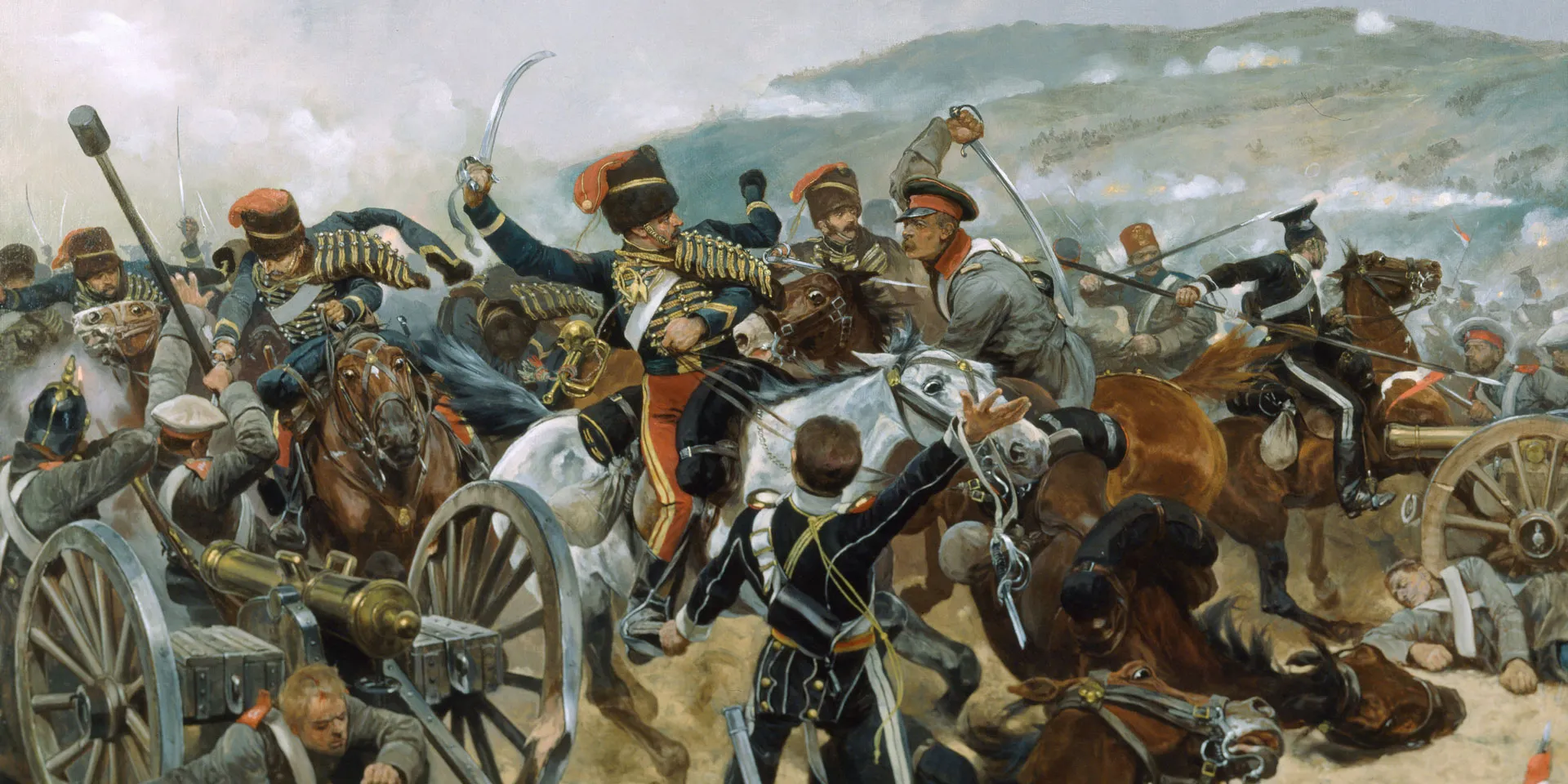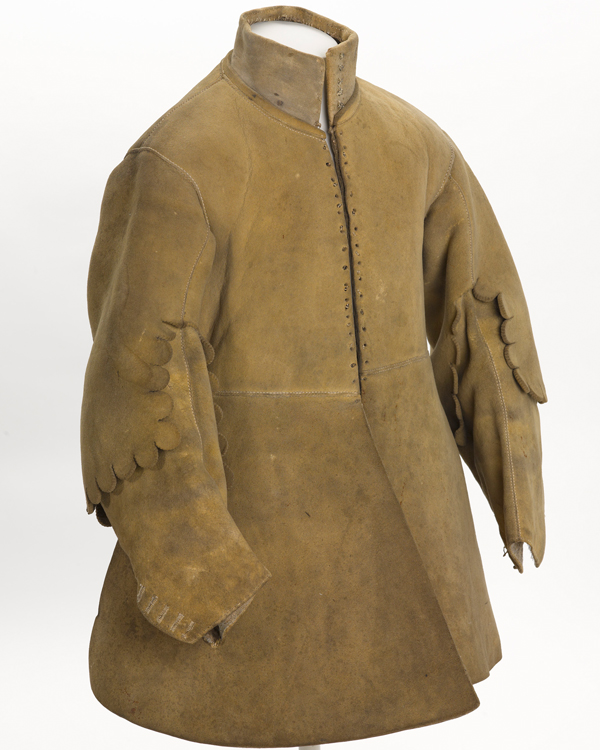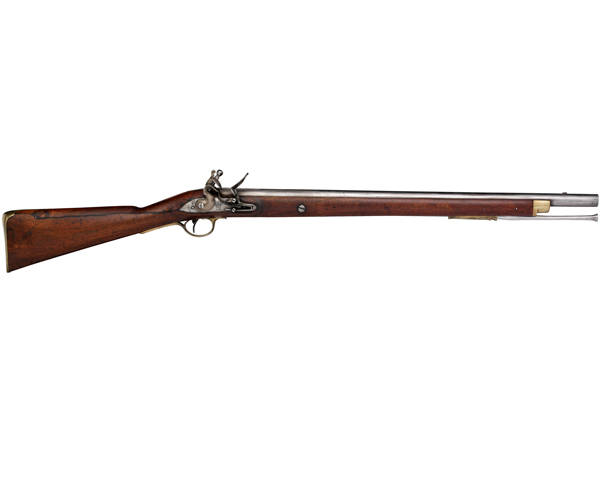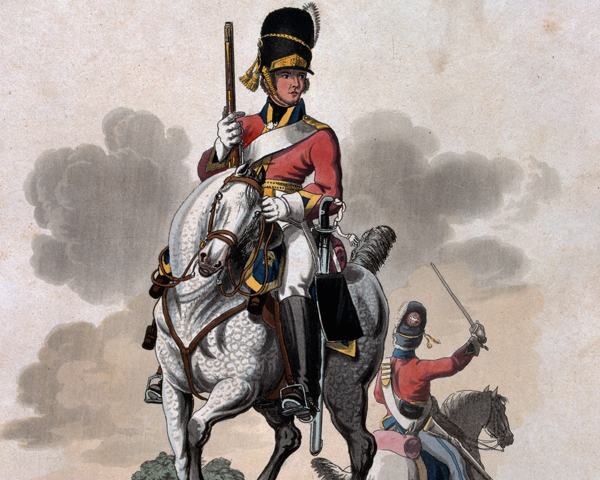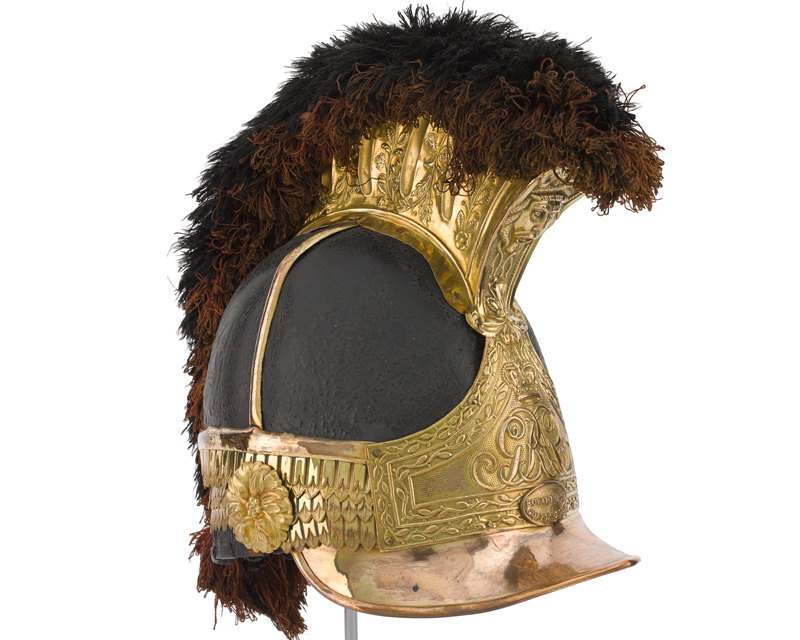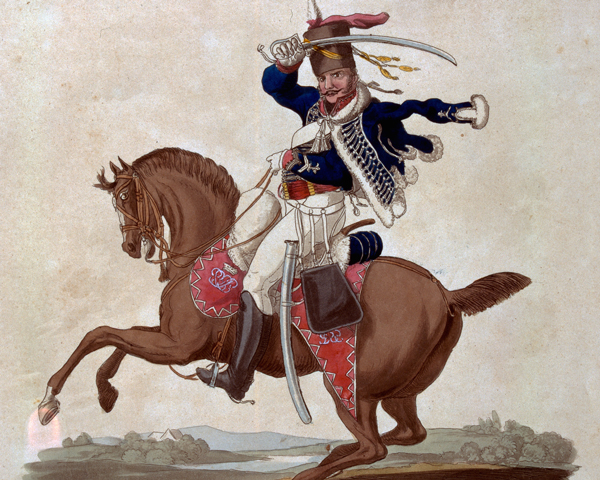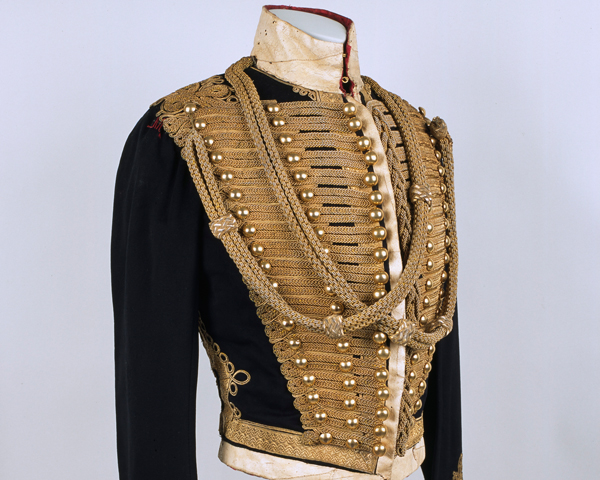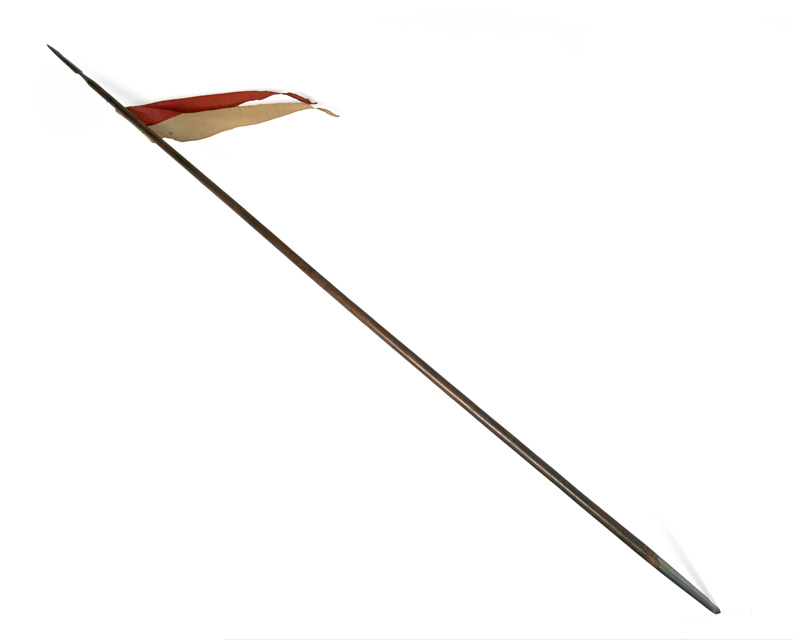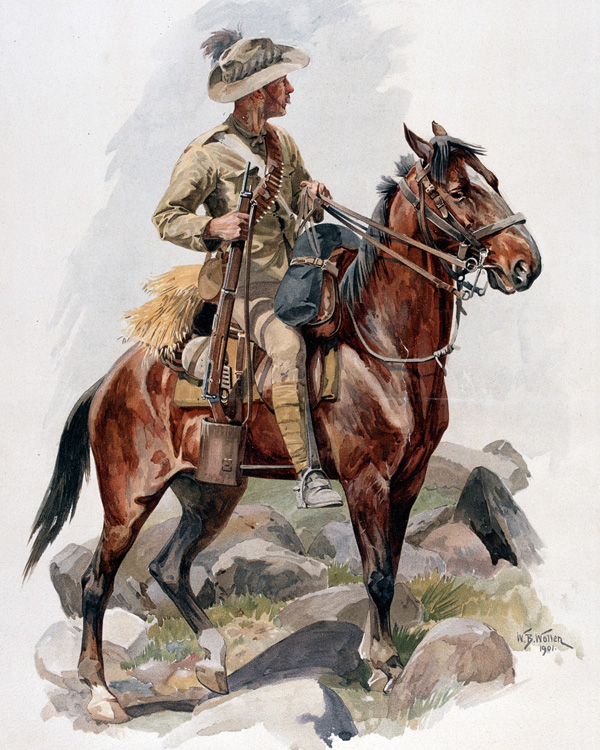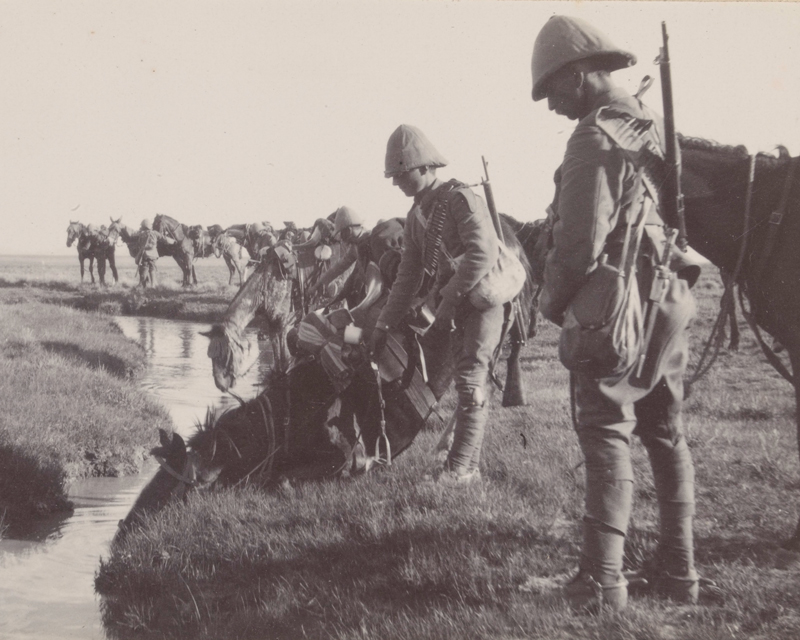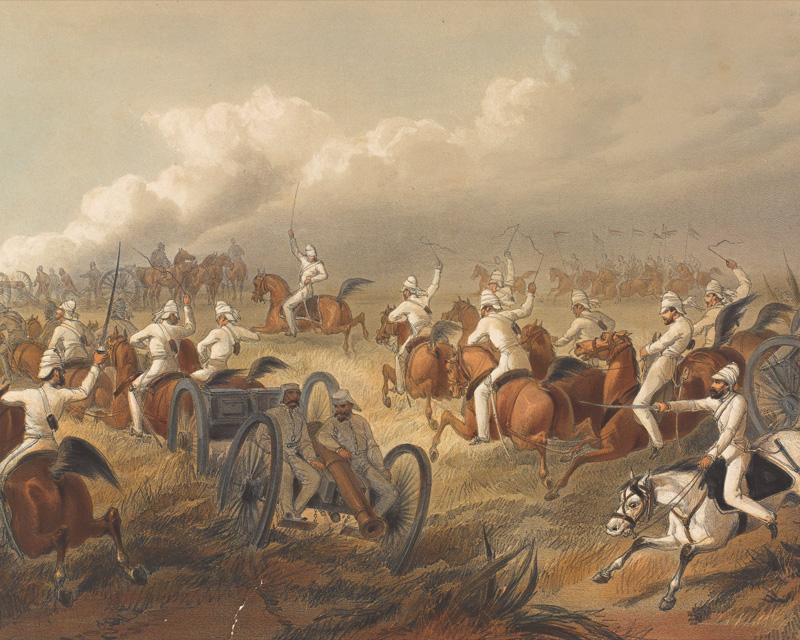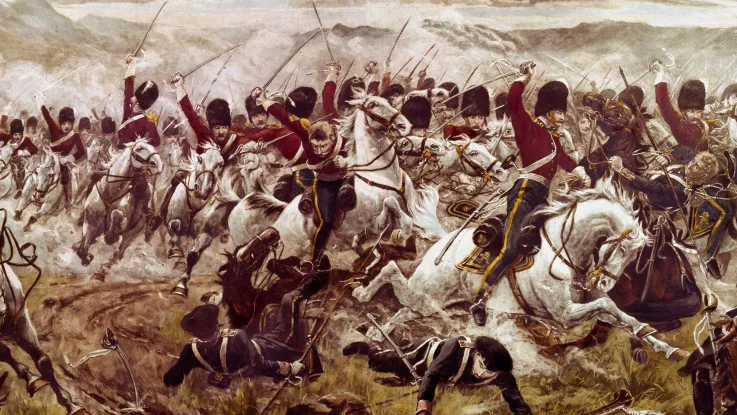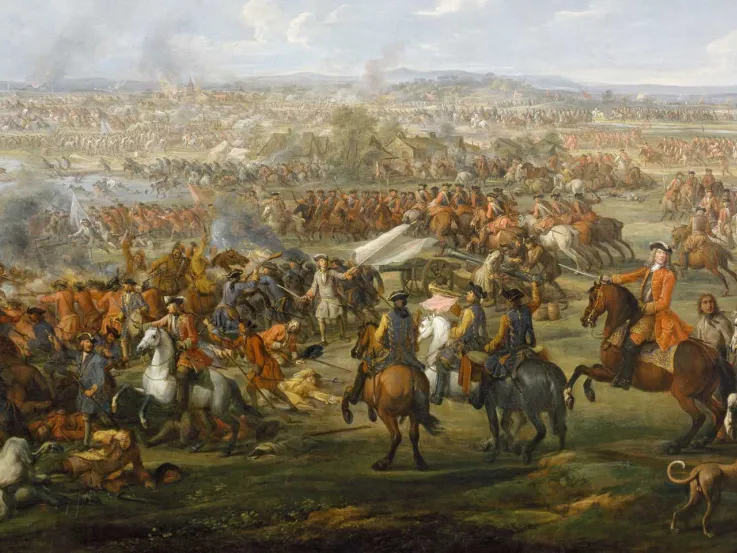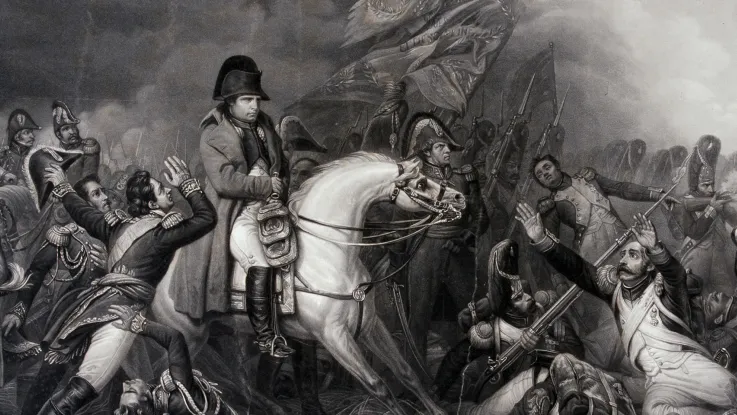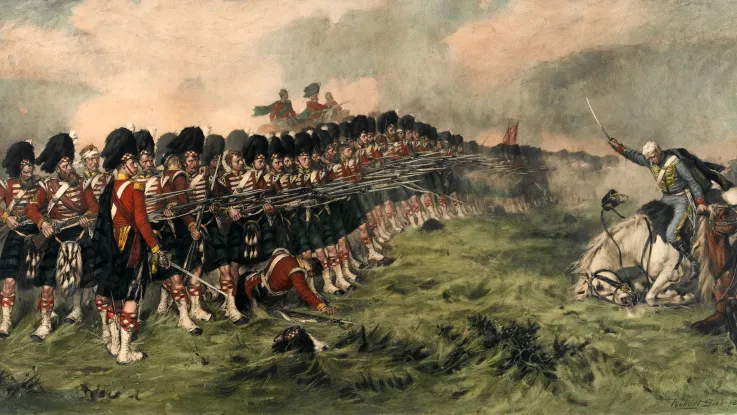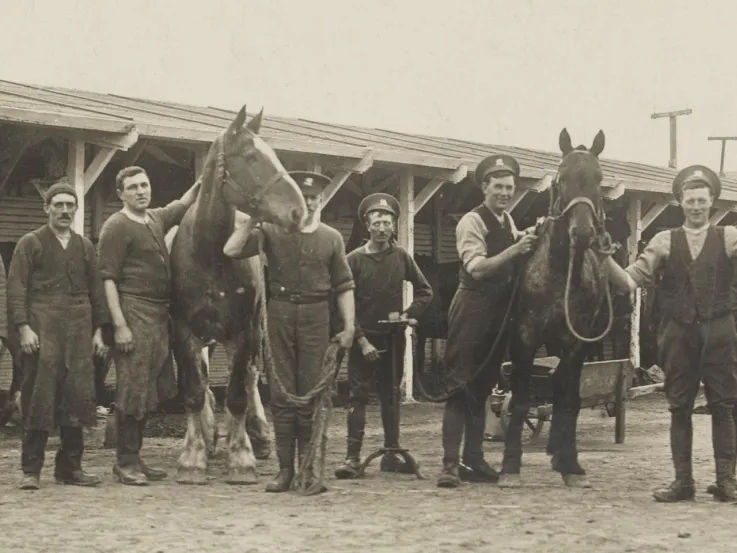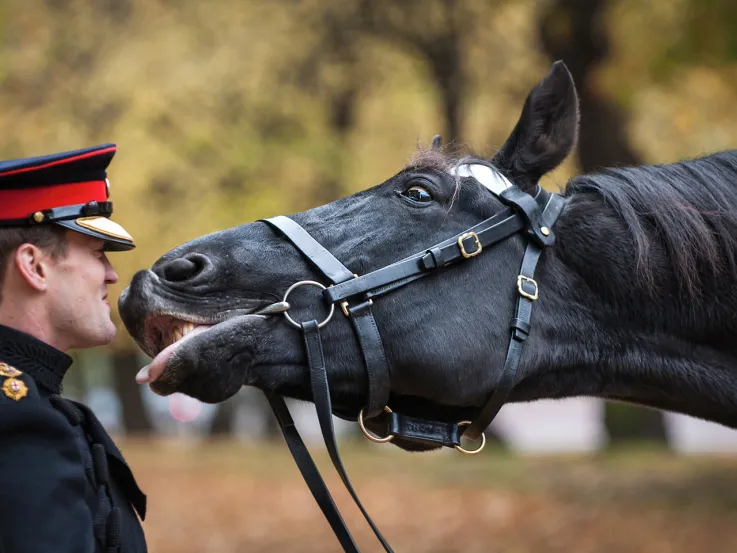Mounted warfare
Cavalry soldiers on large, heavy and strong horses were used to break enemy formations. Some cavalry, and later mounted infantry, also gave commanders mobile firepower on the battlefield.
Small, light, fast horses were used to scout, patrol and pursue. Scouts were trained to spot signs of the enemy and track their movements while staying hidden. They also became specialist marksmen who could shoot very accurately from long distances.
Soldiers on swift horses carried important orders and news (despatches) between commanders and officers. In the event of defeat, horses could also provide a quick getaway.
A horse gave extra height. This allowed generals and their staff to move around a battlefield encouraging and directing their soldiers. They could be seen more clearly by their troops but also by their enemy, making them prime targets for sharpshooters.
'Cavalry is useful before, during, and after the battle.'Napoleon Bonaparte
Harquebusiers and carabiniers
The first cavalrymen to be armed with firearms were known as harquebusiers. The name derived from the word ‘harquebus’, which was their main weapon. This had a shorter barrel than an infantryman’s musket, making it easier to fire from horseback, but giving it a shorter range.
A shortened musket or rifle later became known as a carbine, and was wielded by carabiniers. Britain first raised a carabinier regiment in 1691. They were often armoured like cuirassiers and in some ways functioned like dragoons.
However, carabiniers were used as conventional mounted cavalry from their very inception, unlike dragoons who took hundreds of years to evolve into that role. They were also a Europe-wide phenomenon at the time - the ‘carabinieri’ in the Italian police force have the same origin.
Dragoons
Dragoons were originally mounted soldiers primarily intended to fight on foot. They were named after their main weapon, ‘the dragon’, which was a type of firelock musket common in the 16th century.
In these early years, dragoon horses tended to be cheap beasts of burden rather than fine cavalry chargers. However, by the late 18th century, most dragoon regiments had evolved into conventional cavalry, able to charge and fight on horseback.
They were armed with short rifles, known as carbines, and heavy swords. The British Army had light dragoons, used for scouting and reconnaissance duties, and dragoon guards, who fulfilled a heavy cavalry role by delivering shock action on the battlefield.
Cuirassiers
The heavy cavalry were trained to smash enemy units on the battlefield. They rode big heavy horses, were armed with large swords, and wore a back and breastplate known as a cuirass. The latter gave them their French name of ‘cuirassiers’.
In the British Army, the cuirassier role was performed by the Life Guards and the Royal Horse Guards.
During the late 19th century, the use of heavy cavalry gradually declined as the firepower and accuracy of infantry weapons increased.
Although equipped with armoured vehicles, soldiers of today’s Household Cavalry still parade on horseback and wear their 18th-century-style uniforms - complete with cuirass and helmet - when guarding the monarch during ceremonial occasions in London.
Hussars
Hussars were light cavalry mounted on fast horses. They were used to fight skirmish battles and for reconnoitring. Originally Hungarian, by the mid-18th century most European armies had recruited hussar regiments.
The British Army first encountered them during the War of the Austrian Succession (1740-48), but did not start transforming certain of its own light dragoon regiments into hussars until 1806.
The most expensively dressed and flamboyant of all cavalry, hussars wore pelisses. These were short fur-edged jackets that were worn slung over the shoulder in the style of a cape, and fastened with a cord.
Their uniforms reached a peak of magnificence by the time of the Crimean War (1854-56). During this conflict, two hussar regiments - the 8th and 11th - took part in the famous Charge of the Light Brigade in 1854.
Today's hussar regiments drive armoured vehicles.
‘My friend, any hussar who does not die by thirty is a blackguard.’General Antoine-Charles-Louis de Lassalle, French hussar commander — 1804
Lancers
The main task of the lancers was to charge enemy infantry and cavalry formations. They were also used for typical light cavalry tasks such as skirmishing and scouting.
Although they wielded a fearsome lance as their chief weapon, lancers were normally equipped with sabres and pistols or carbines. These weapons were for close combat, whereas the lance had its greatest impact in the charge.
The British established lancer regiments in 1816 after confronting French lancers during the Napoleonic Wars (1803-15). Improvements in the range and accuracy of rifles in the late 19th century, alongside the appearance of the machine gun, made the lancer’s role largely obsolete.
Today, lancer units are mechanised.
‘I had never before realised the great superiority of the lance over the sword.’French commander General Durutte at Waterloo — 1815
Yeomanry
The volunteer yeomanry cavalry units were originally formed in the 1790s as a response to the invasion threat from Revolutionary France. However, they were also used to support the civil authority to put down political and social disturbances. This continued until the mid-19th century, when police forces took over this role. The yeomanry then concentrated on local defence.
Members of the yeomanry were usually armed with swords and pistols or carbines. They were not obliged to serve overseas, but most did when asked to do so - as in 1914 at the outbreak of the First World War. By then, the yeomanry had become the cavalry wing of the Territorial Force (today's Army Reserve).
The last mounted regiment of yeomanry was the Queen’s Own Yorkshire Dragoons, which was converted to an armoured role in March 1942.
Mounted infantry
British mounted infantry units emerged during the colonial conflicts of the late 19th century.
Foot regiments formed mounted platoons for scouting and skirmishing when serving overseas in Australia, South Africa, Egypt and Sudan. Many of these eventually formed the Imperial Mounted Infantry.
The troops travelled great distances on horses, but fought on foot with rifles. Likewise, several colonial units - such as the Cape Mounted Rifles, Natal Carbineers and Victorian Mounted Rifles - fought as mounted infantry.
Many colonial soldiers were experienced horsemen and hunters, used to an outdoor life in their homelands. They made expert mounted infantrymen.
The distinction between traditional cavalry and mounted infantry was often blurred. During the Second Afghan War (1878-80), the 9th Lancers always went into action with their carbines on their backs so they could fight on foot if required.
The real difference was that while the cavalry could perform mounted infantry duties, the mounted infantry could not charge effectively, having neither sword or lance.
Even though the smaller and often hardier ponies used by mounted infantry were generally easier to maintain than the larger cavalry horses, the mounted infantry concept was regarded as less useful in Europe than in colonial warfare. By 1914 most units had been disbanded.
Horse artillery
The Royal Horse Artillery (RHA) was raised in 1793 and had the task of giving artillery support to the cavalry. With its soldiers all riding into battle on horses, wagons or limbers, the RHA was able to keep up with the fast-moving mounted units. Six-horse teams were normally used to haul the RHA’s guns into action. The East India Company’s Bengal and Bombay Armies also formed their own horse artillery units on similar lines.
Once in position, horse artillery crews were trained to quickly dismount, unlimber their guns, then rapidly fire at the enemy. They could then just as rapidly limber up, remount and be ready to move to a new position.
A classic use of horse artillery was against an enemy infantry square that had formed up to resist a cavalry charge. Firing grape shot into the massed ranks could break up the square and allow the cavalry to destroy it.
Another common role for the RHA was as cover during the retreat of slower-moving units. Their speed of deployment meant they could also act as a rapid response force, repulsing attacks in a threatened sector of the battlefield.


